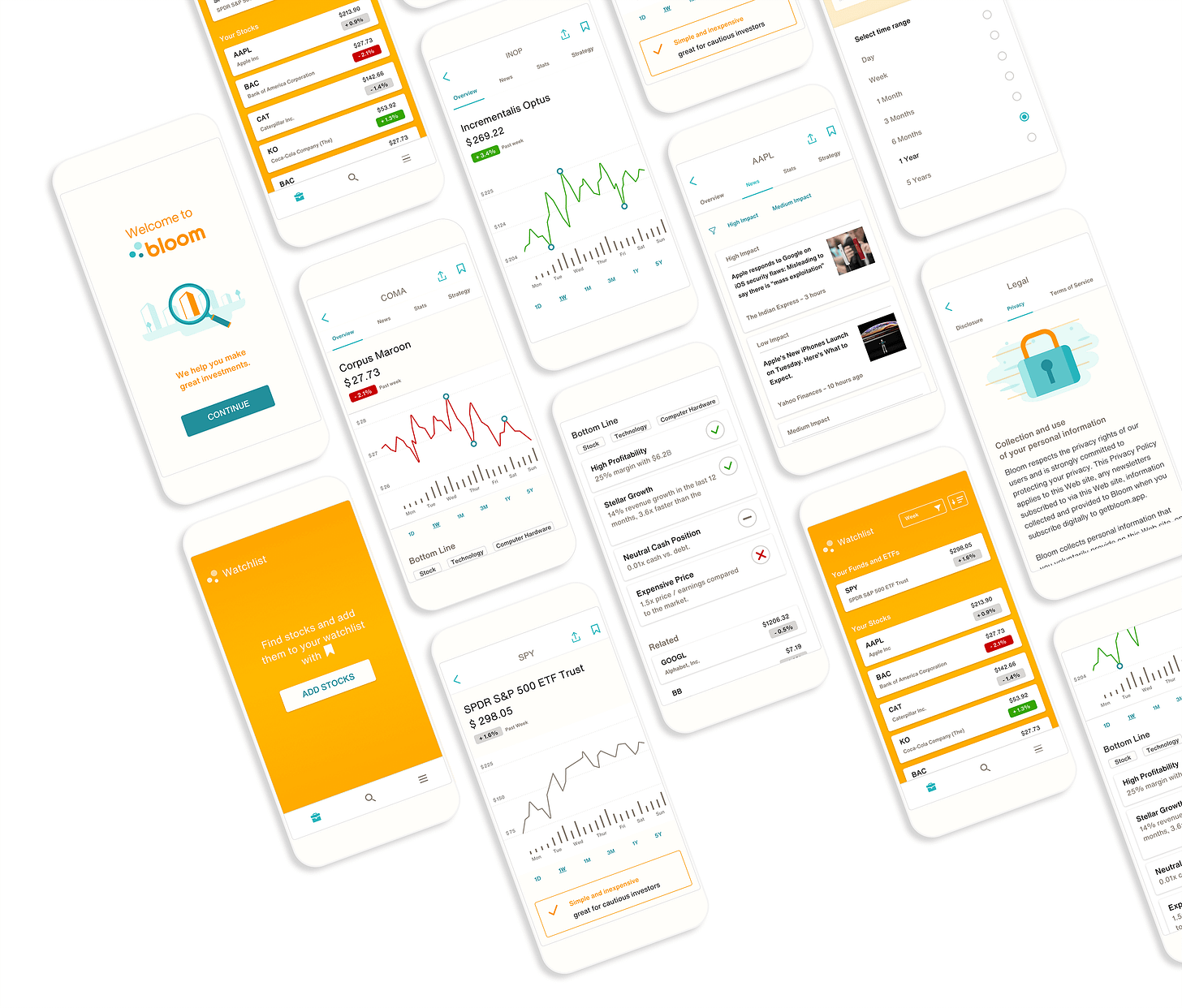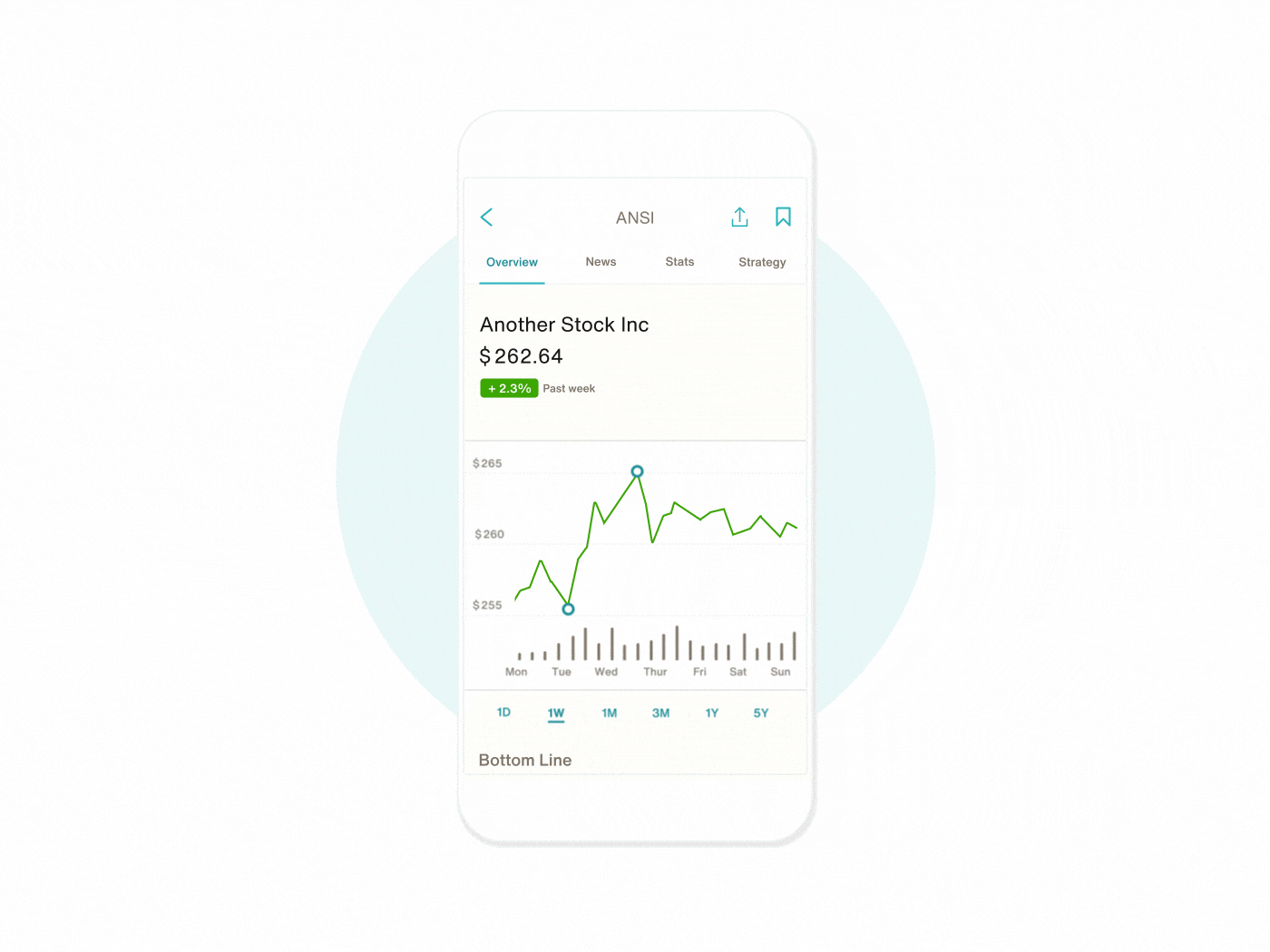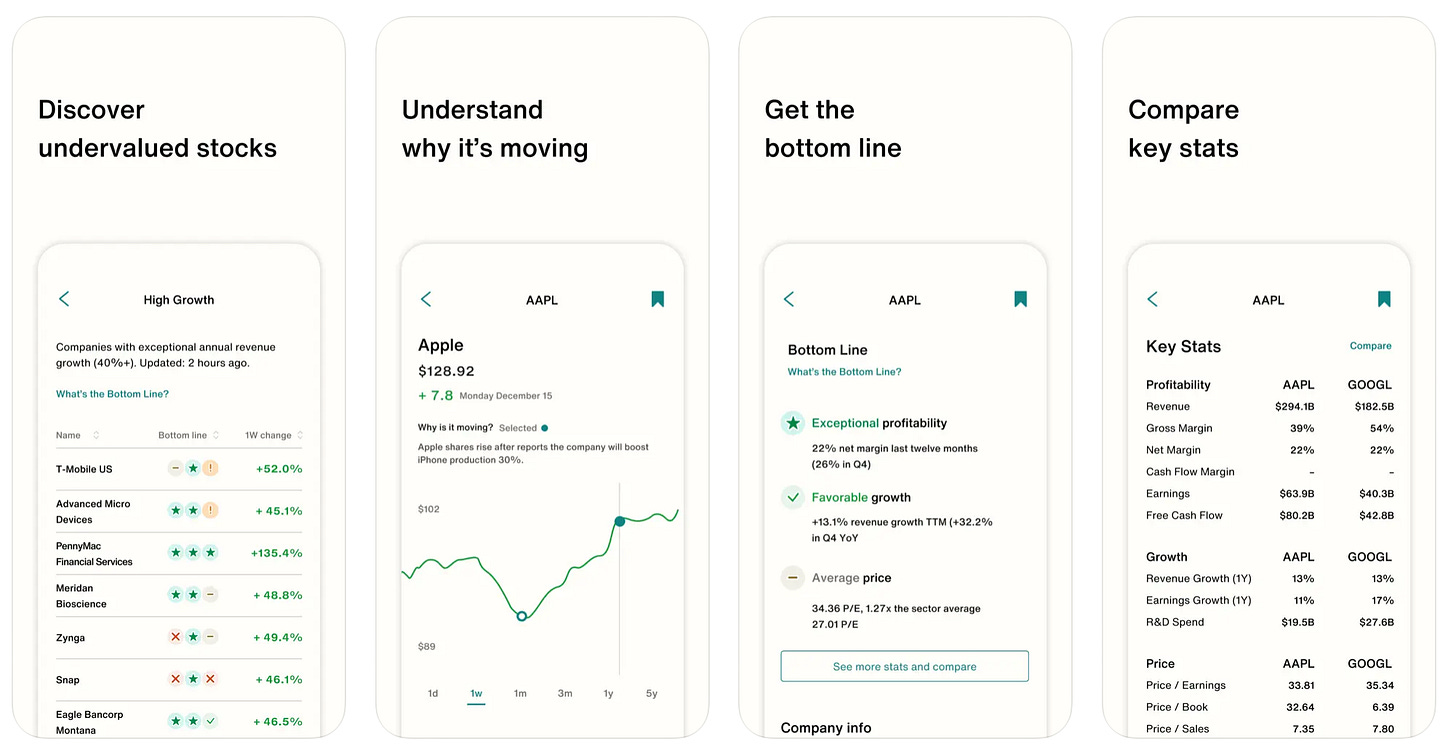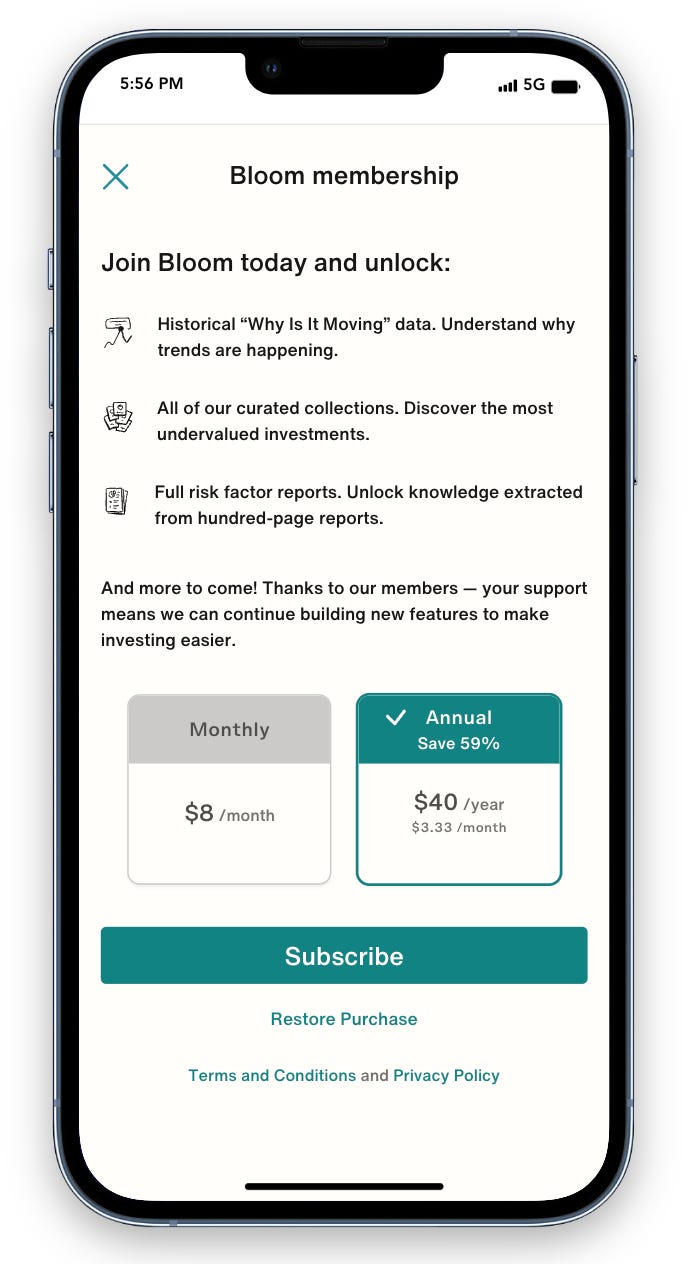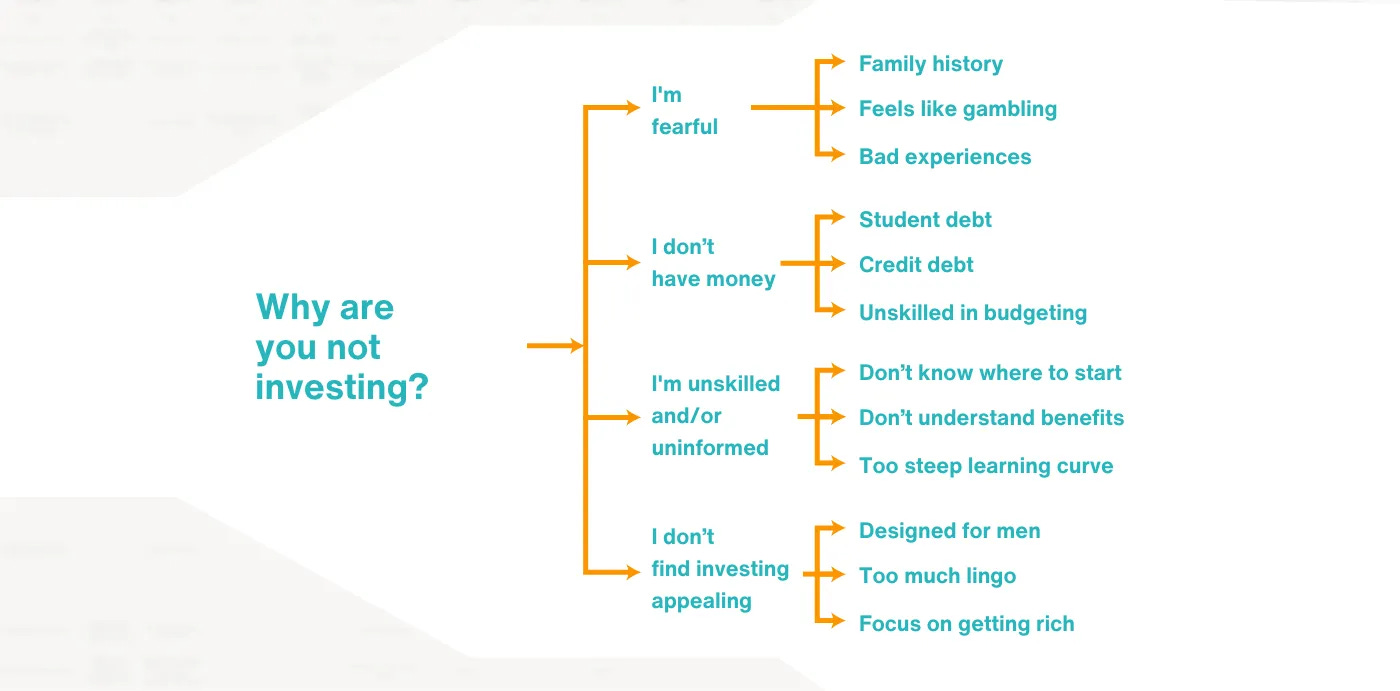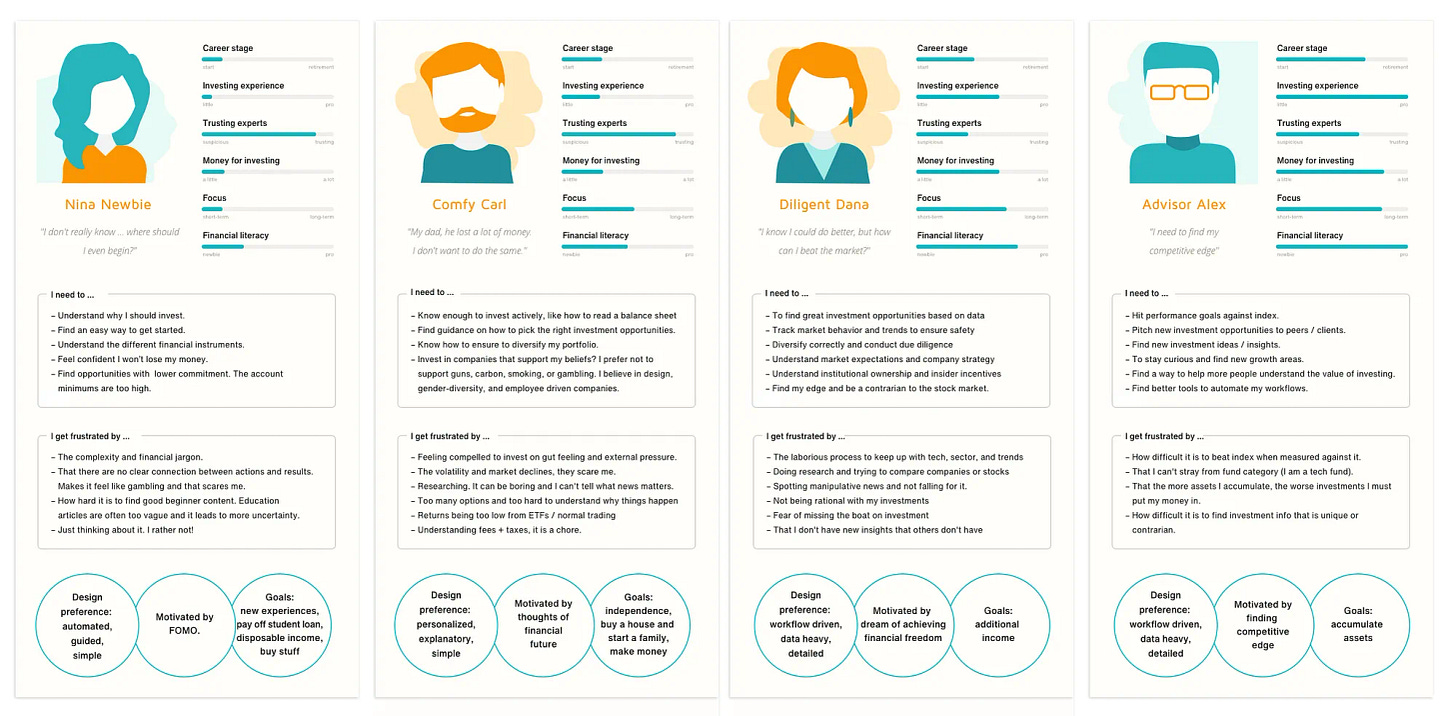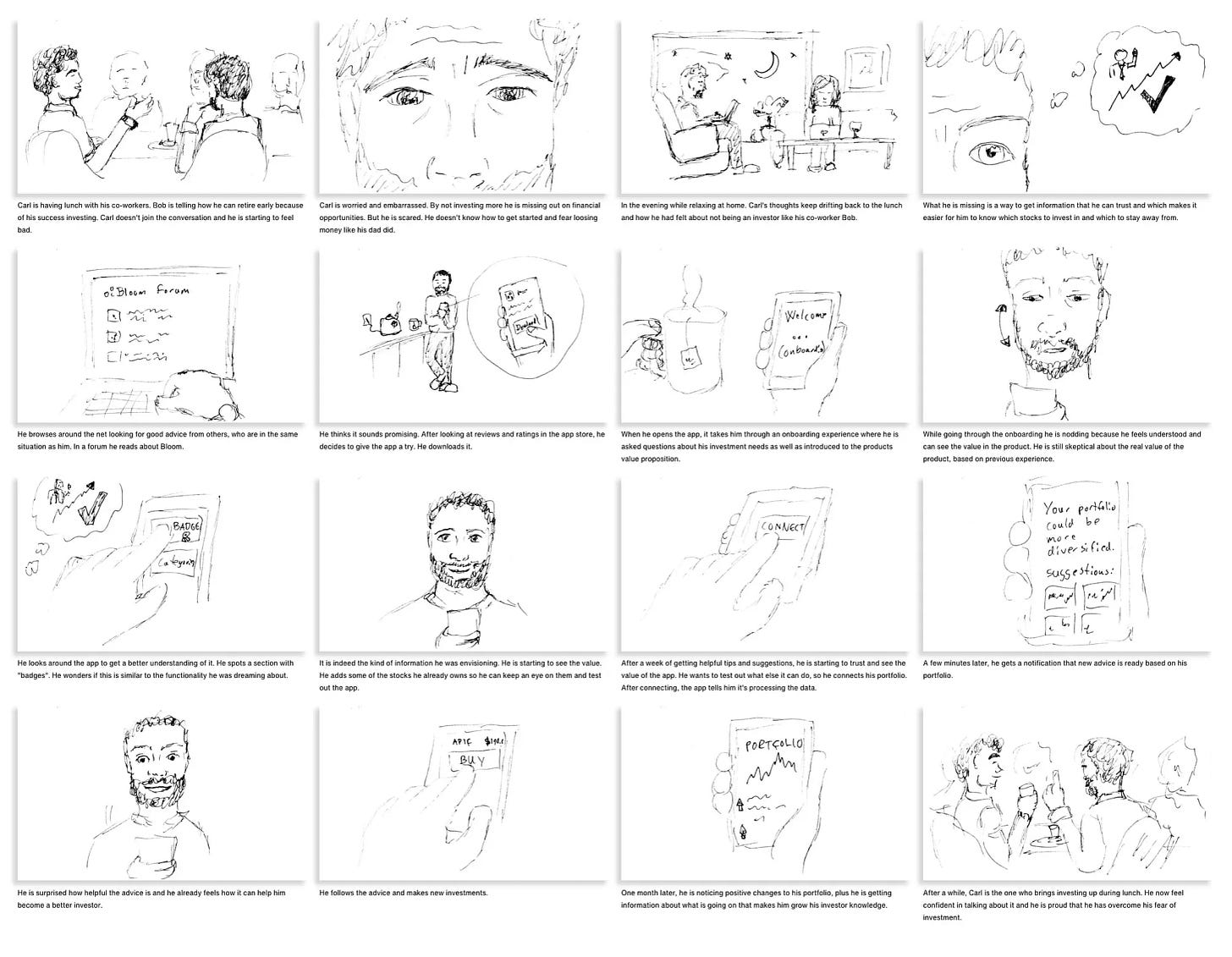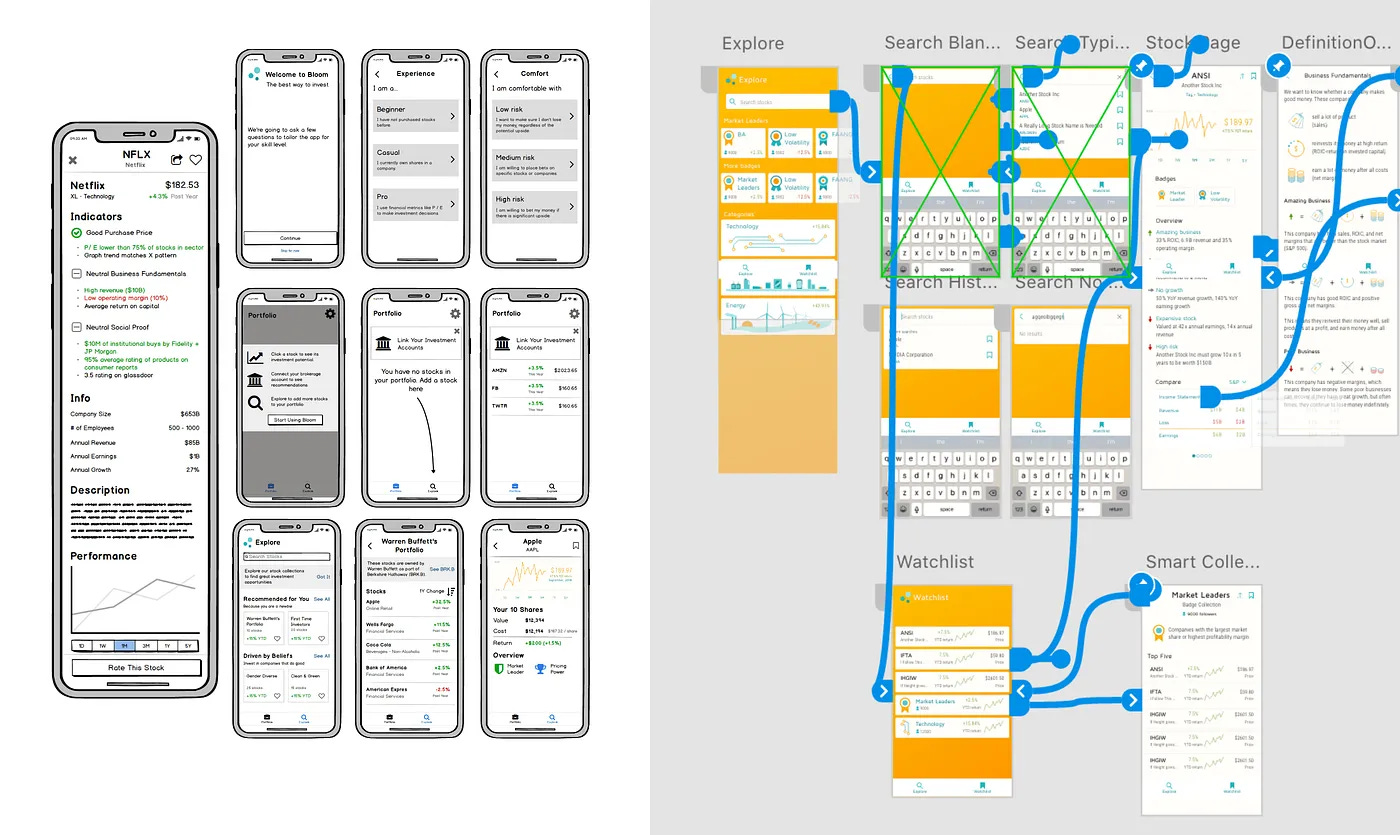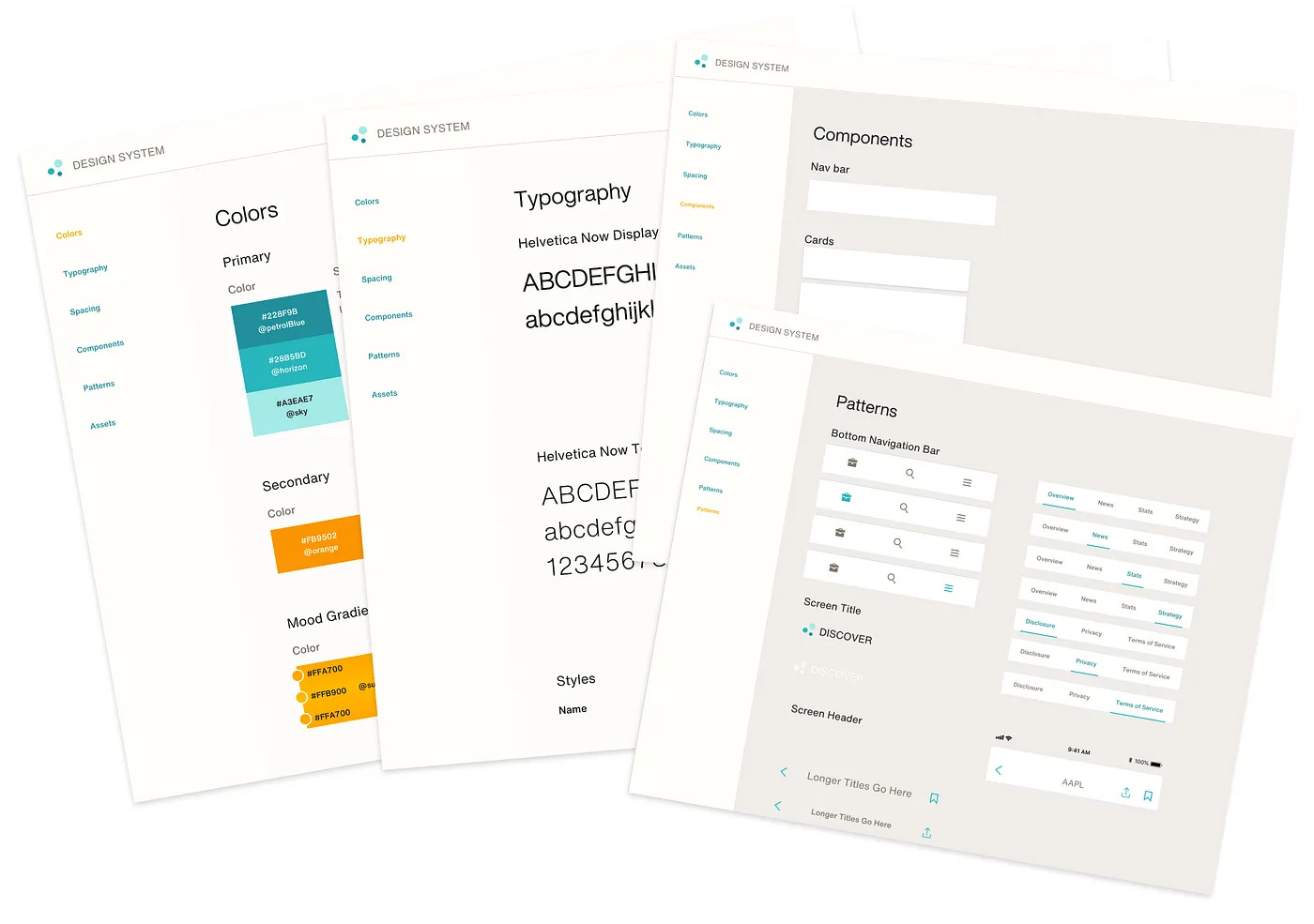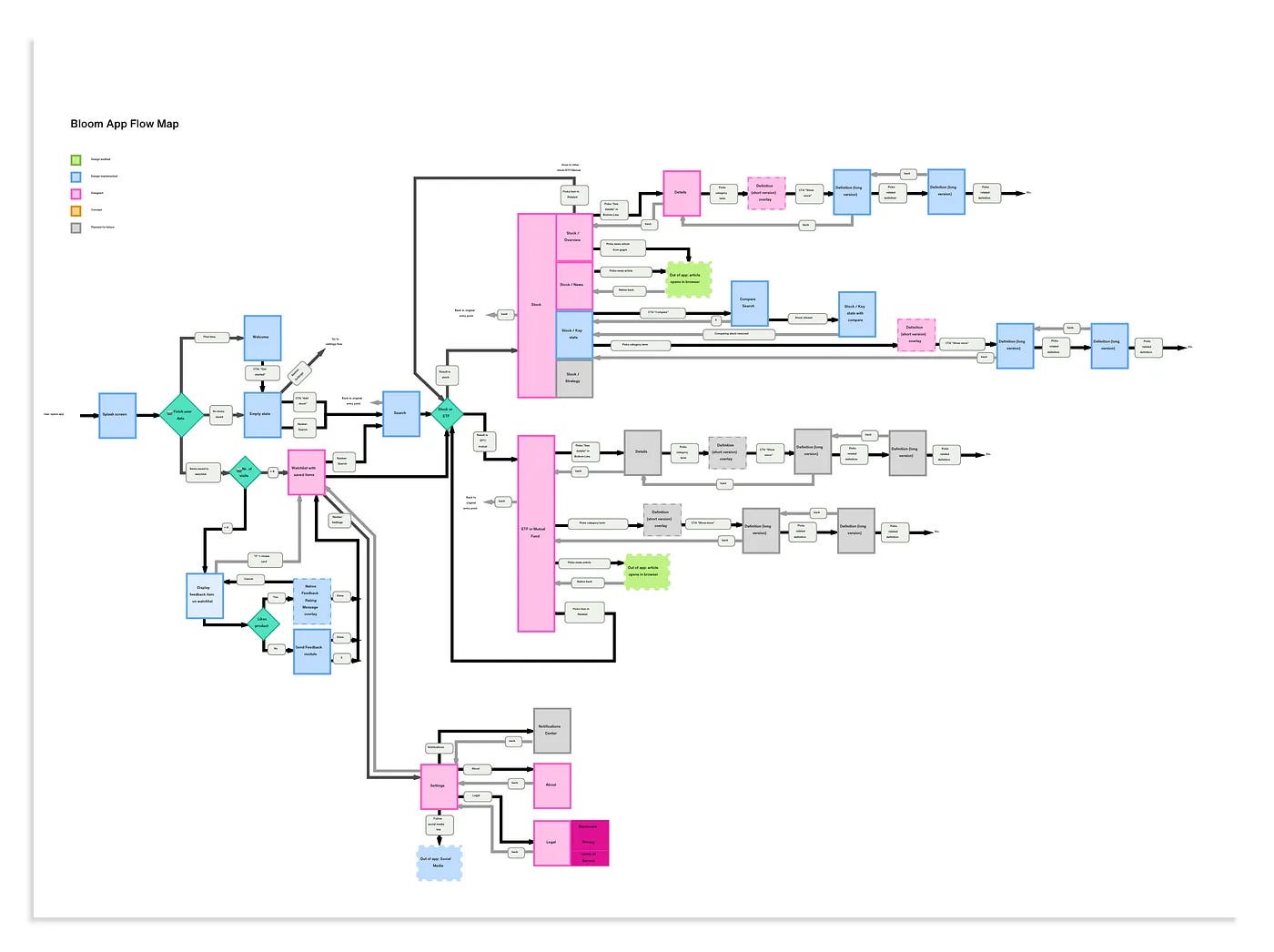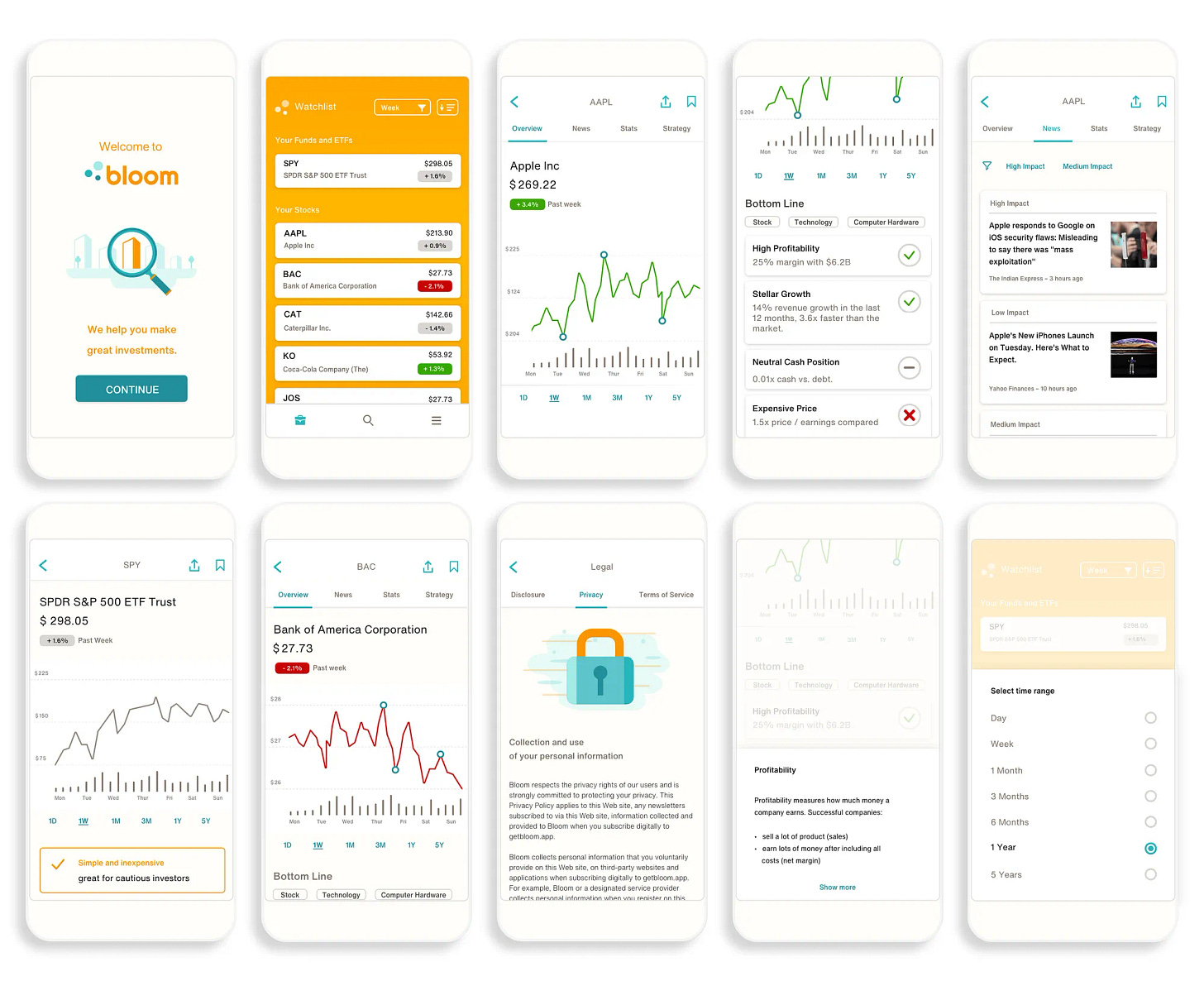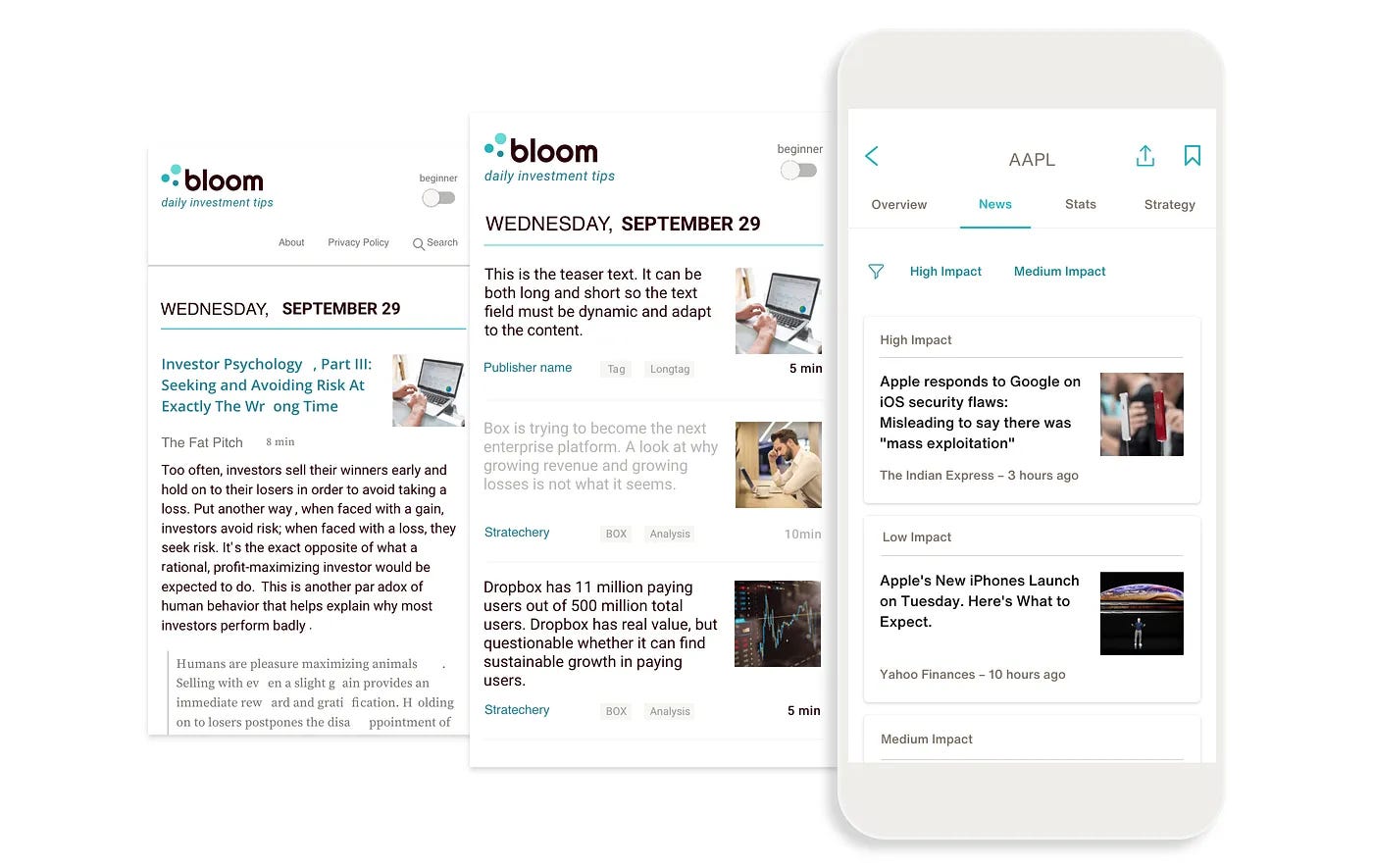Reimagining stock research with Bloom
A product case study on avoiding the build trap
Bloom is an investment research app we created for value investors in 2018. Big thanks to Maria Hagsten for her amazing design work and graphics. In this post, I'll share what Bloom does, what we've learned, and how you can get it. If you're making mobile apps on your own, our story might help you!
You can download the app (and access our new GPT-4 assistant here):
What is it?
Bloom helps do-it-yourself investors research and evaluate stocks.
What are we solving?
Stock research today is overwhelming. Investors waste time wading through millions of opinions and news articles published across social and financial media. Most of them do not deserve investor attention. Even reports from the source, such as financial statements and 10-Ks, are lengthy and opaque. How can we help investors find high-quality information faster?
How are we solving it?
Bloom is a simple way to find high quality companies at good prices. Bloom helps investors save time researching stocks. It filters out the noise, summarizing financial statements and showing relevant news that affects stock prices.
Bloom has several features I still use for my own investment process:
Discovery - find promising companies before they take off.
News on graph - see why stock prices change with highlighted key events.
Bottom line - assess a company’s financial health in seconds using our qualitative ratings.
Compare - compare stocks in your portfolio across every financial metric.
Risk factors — understand potential risks from the company 10-K reports.
Investor report links — access the investor portal for every public equity in the US.
The inspiration behind the idea
In the late 2010s, new investors were on the rise, influenced by platforms like Robinhood and Wall Street Bets. As a new earner, I faced the challenge of investing wisely. Realizing the lack of simple, educational tools in investing, we developed Bloom to help people invest with confidence. Our team includes Maria Hagsten (designer) and Calvin Woo (engineer). Today, they are working on becomeunstuck.app, a CBT journal for overcoming anxiety.
Our development stack
Our development tools include React for our frontend UI, Render.com for hosting, Django with Postgres for the backend, Algolia for search, and Ionicframework for mobile deployment. Our data sources include IEX Finance, Benzinga, EODhistoricaldata, and alphavantage.
How do we earn money?
We acquire customers when they come across our app in app store search. We run paid Apple and Google app store search ads. We also engage with communities on Reddit. Some of Bloom's features are behind a paywall, which requires a $7 monthly or $40 yearly subscription.
Learnings
We put all this time and energy into building something we thought people would love. Why didn’t it take off and make us hundreds of thousands of dollars?
We fell into trap number 1 for almost every startup, which is the build trap.
"If we just build this next feature, then people will come." No they won’t. Nobody cares unless we make them care. Our backgrounds reflect this bias. Think about it — an introverted product manager, designer, and engineer get together and brainstorm the next big app idea. They work on it on nights and weekends. They continue polishing the product until they publish it onto the app store. They expect, hope, and pray for fanfare and success. Success inevitably never comes, and the section above on "how do we earn money" showcases why.
I think the product itself is wonderful, even setting my bias aside. The illustrations are beautiful. The design is exquisite. The load times are fast and quick. The app is simple and clear, and the data visualizations took us months to polish and publish. But product does not matter. It hurts my soul to say that, but it’s true. Successful companies have products people complain about every day. This includes Salesforce, Tableau, SAP, Workday, and others.
Software features are a commodity because any team of smart people can build them. Product and product usage are really tied to brand. What does this piece of software stand for? What consistent outcome is it promising to its customers? Does it fulfill that brand promise?
We worked on many features that, in hindsight, don’t matter if nobody uses the product. For example: we worked on typo-tolerant search, watchlist filters, better news sources, faster app load time, company description, more accurate bottom line grades, and a cleaner touch interface for the graph. We are proud of the high-quality finish and polish. But honestly, these projects distracted us from getting people to notice, use, and pay for our product.
The second trap we fell into is that we spent way too little time on increasing revenue.
We are not a .org business, we are trying to make a living. In our bubbles of silicon valley startups with too much funding, we were inside the development abstraction layer. All we had to focus on was building well-designed, easy to use products built into the context of people’s lives. The rest of the company focuses on monetizing, selling, and scaling.
But a startup has none of those luxuries. Nobody is going to tell users about our features unless we do. Nobody is going to get customers to pay us money unless we ask them to. Getting this part right is the most important thing for every startup. I’m willing to say that writing any code at the 0 → 1 stage of a product (i.e. zero customers zero revenue) for most software applications is a waste of time.
But we did a few things right. We recognized there was a clear under-served market for stock market research. We committed to value investing and efficient design as what we stood for. And we got great feedback from users raving about the product, with organic 4.7 / 5 rating from 100+ app store reviews.
If I had a do-over, I would focus on customer acquisition over features.
How are people going to discover Bloom? Where are they going to find us? How do we do this cheaply? How do we increase our conversion from free to paid? Can we increase our pricing? That’s where our focus should be, and what I advise all startups to focus on driving if the idea is set and the bet has been made. And of course, the opportunity cost is always to work on something else entirely.
Appendix
Here you can find visual assets which reflect how the app has evolved since we first started working on it in 2017.
Pain points with investing
Personas
Storyboard
Prototypes
Brand colors and illustrations
App flow diagram
First full concept
Evolution from mockup to application
If you enjoyed this post, please share it with others and subscribe!


